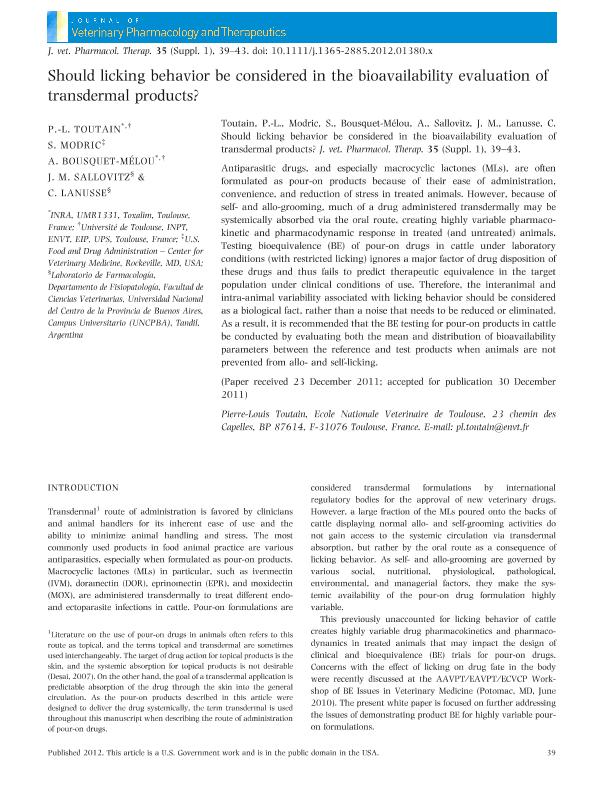Artículo
Should licking behavior be considered in the bioavailability evaluation of transdermal products?
Fecha de publicación:
04/2012
Editorial:
Wiley Blackwell Publishing, Inc
Revista:
Journal of Veterinary Pharmacology and Therapeutics
ISSN:
0140-7783
Idioma:
Inglés
Tipo de recurso:
Artículo publicado
Clasificación temática:
Resumen
Antiparasitic drugs, and especially macrocyclic lactones (MLs), are often formulated as pour-on products because of their ease of administration, convenience, and reduction of stress in treated animals. However, because of self- and allo-grooming, much of a drug administered transdermally may be systemically absorbed via the oral route, creating highly variable pharmacokinetic and pharmacodynamic response in treated (and untreated) animals. Testing bioequivalence (BE) of pour-on drugs in cattle under laboratory conditions (with restricted licking) ignores a major factor of drug disposition of these drugs and thus fails to predict therapeutic equivalence in the target population under clinical conditions of use. Therefore, the interanimal and intra-animal variability associated with licking behavior should be considered as a biological fact, rather than a noise that needs to be reduced or eliminated. As a result, it is recommended that the BE testing for pour-on products in cattle be conducted by evaluating both the mean and distribution of bioavailability parameters between the reference and test products when animals are not prevented from allo- and self-licking.
Palabras clave:
Licking Behaviour
,
Moxidectin
,
Bovine
,
Percutaneous Absorption
Archivos asociados
Licencia
Identificadores
Colecciones
Articulos(CIVETAN)
Articulos de CENTRO DE INVESTIGACION VETERINARIA DE TANDIL
Articulos de CENTRO DE INVESTIGACION VETERINARIA DE TANDIL
Citación
Toutain, P. L.; Modric, S.; Bousquet Mélou, A.; Sallovitz, Juan Manuel; Lanusse, Carlos Edmundo; Should licking behavior be considered in the bioavailability evaluation of transdermal products?; Wiley Blackwell Publishing, Inc; Journal of Veterinary Pharmacology and Therapeutics; 35; SUPPL. 1; 4-2012; 39-43
Compartir
Altmétricas




